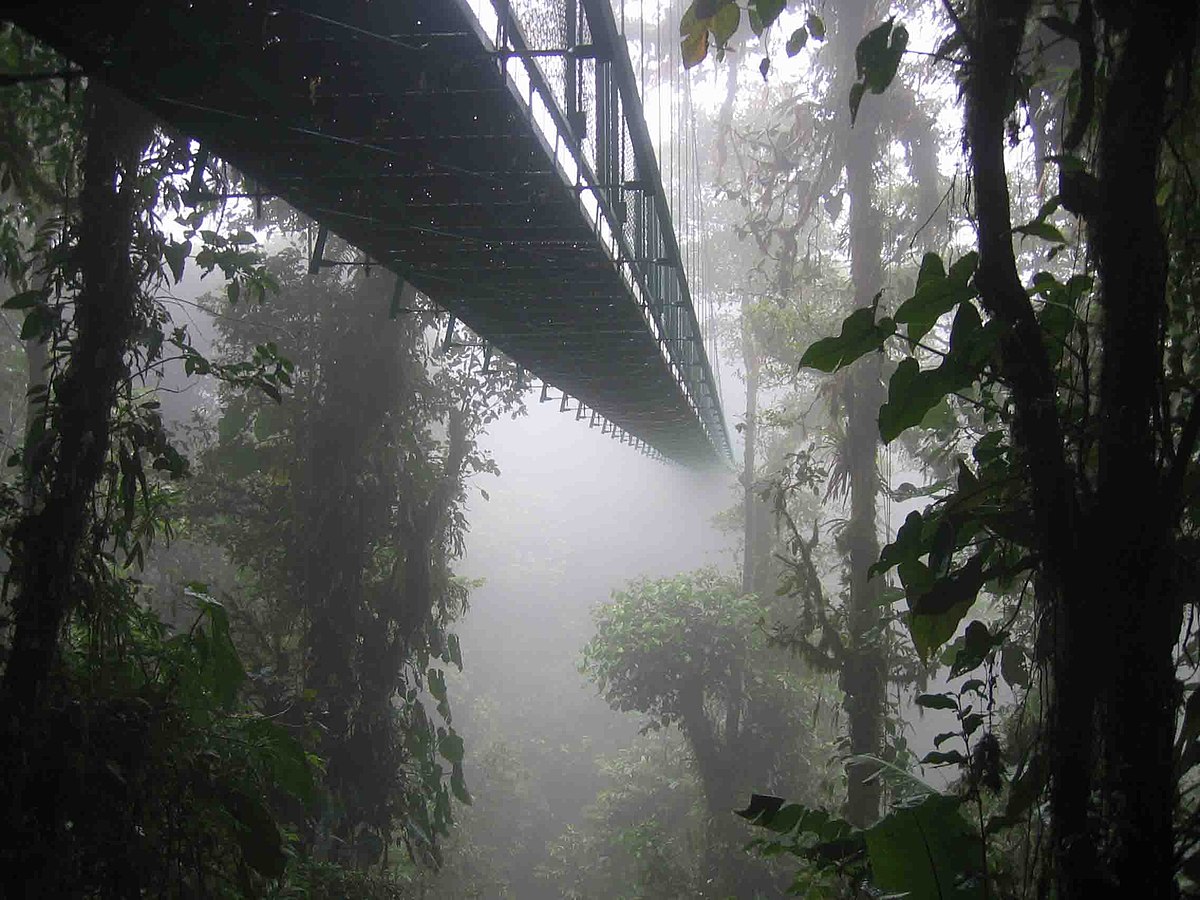
By User DirkvdM on en.wikipedia - Photograph by Dirk van der Made (en:User:DirkvdM - for more photos see en:user:DirkvdM/Photographs)., CC BY 1.0, Link
|
Or course, this can vary widely from region to region as geographic location and altitude only get the ecosystem so far. It also demands favorable hydrology and climate, both of which can fluctuate immensely in the anthropocene era.
These regions are so specific that they only make up 0.85% of the Earth's total forest and woodland cover as of around the year 2000. That is undoubtedly lower now with forests, in general, losing land coverage since then. To put it in perspective, forests, as of 2010, have covered 30% of the Earth's landmass, cloud forests specifically only accounting for 0.25% of the entire landmass, and deforestation continues at alarming rates. They truly are rare and only getting rarer. |
Cloud Forests get their name from their relationship with clouds. They really are forests in the clouds! |
Epiphytes, like mosses, can pull water from the clouds engulfing the forest, providing fresh water without rain |
Mosses, for example, are non-vascular plants (meaning that they don't have systems for moving nutrients around the plant, like roots). To cope with this, they are very well-equipped to gathering and storing water through their leaves. Water that does not get absorbed will trickle down the surface that the plant is situated on, eventually delivering the water to the ground. Now, since mosses can't move nutrients up the plant via root system, they tend to be small anyways. When we say "eventually" it really isn't that long of a wait given the plant's structure.
The lushness granted by the habitats amazing ability to pull water from air gives way to an astounding array of bird species as well as the wild forms of plants that we know in our household today. This includes things like the tomato, avocado, blackberry, cucumber, and potato. Suffice to say, despite the exactness of the needs for this ecosystem to thrive, a lot of plants and animals call it home! |
|
One of the sustainable resources, and arguably the biggest social dependency, is that of a dry season watershed. Since the forest is capable of pulling water from vapor, any water that trickles to the ground not absorbed into the ground will find its way to streams. These streams provide a dependable source of fresh water to communities that otherwise wouldn't have any during dry seasons. If there is a community around a cloud forest, you can almost guarantee that they'll be downstream of the forest to capitalize on this feature of the environment!
Preserving a Threatened EcosystemWater aside, as over-exploitation would actually drive away communities neighboring the forests, these ecosystems are subject to some of the same dangers as other forests in the world. Timber extraction, while more difficult to do, is still done especially on the forest fringes. The most common reasoning is to make way for farmland. One of the key ways to combat this is to adopt more socio-economic agricultural practices, taking advantage of the trees benefits rather than uprooting them.
|
Human communities depend on the forest's unique watershed, living along streams that flow even in dry seasons thanks to its ability to pull water from clouds |
